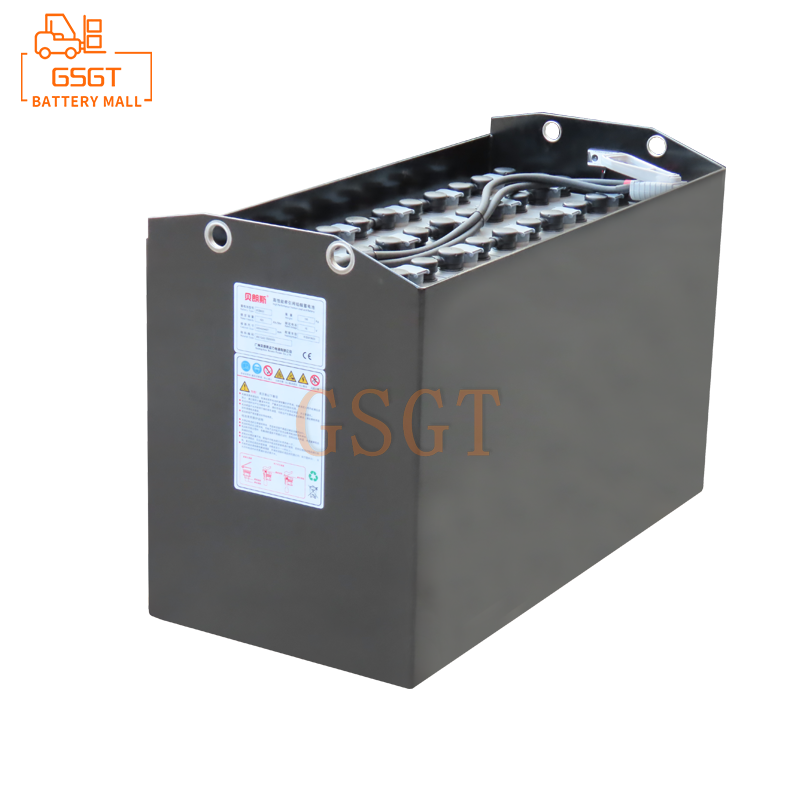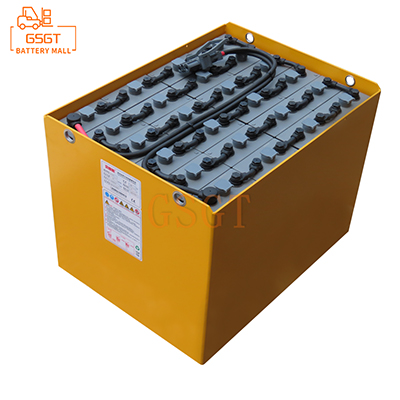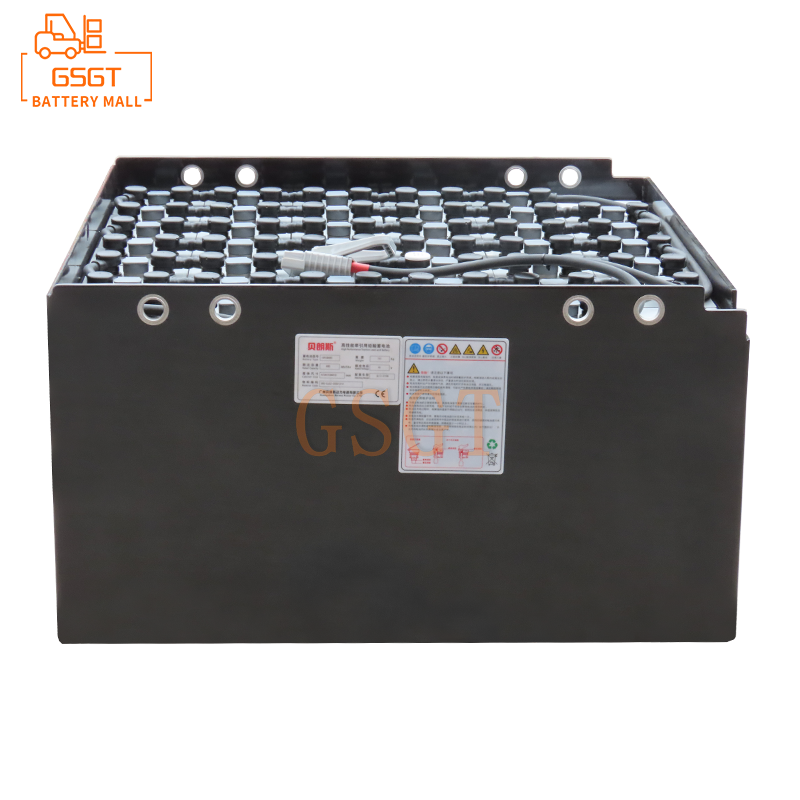Time:2025-05-27 11:07:57
Browse:615
In the field of modern logistics and warehousing, forklifts, as indispensable handling equipment, undertake the key task of efficient loading, unloading and transfer of goods. The power source of forklifts - lead-acid batteries, the stability of their performance directly determines the working efficiency, service life and operating costs of forklifts. Therefore, providing comprehensive and systematic stability guarantees for lead-acid batteries in forklifts has become an important issue for logistics enterprises to enhance their competitiveness and achieve sustainable development.
1. Characteristics of Lead-Acid Battery Forklifts
In the actual use of forklifts, their working environment is complex and changeable, which puts forward special requirements for lead-acid batteries. Forklifts frequently start, stop, accelerate and decelerate, which requires the battery to provide a large current instantaneously. This poses a huge test to the battery's discharge performance and the structure of the plates. The temperature and humidity differences in operation sites such as warehouses and workshops, as well as factors like dust and corrosive gases, can also affect the performance and lifespan of batteries. In addition, the operation time of forklifts is often not fixed, and there are cases of continuous operation in multiple shifts. This requires the battery to have the ability of fast charging and reliable endurance.
2. Key Factors Affecting the Stability of Lead-Acid Batteries in Forklifts
(1) Improper charging management
Charging is the core link in the maintenance of lead-acid batteries. Improper charging is one of the main reasons for the decline in battery performance and the shortening of battery life. Overcharging can cause the battery to heat up, accelerate the aging of the plates and the evaporation of the electrolyte, and even lead to safety accidents such as battery bulging and explosion. Insufficient charging will cause sulfation of the battery plates, reducing the battery's capacity and charging and discharging efficiency. In addition, unreasonable Settings of charging current and voltage, as well as the use of mismatched chargers, can all cause damage to the battery.
(2) Poor maintenance of the electrolyte
The electrolyte serves as the medium for chemical reactions in lead-acid batteries, and its density and liquid level directly affect the battery's performance. If the density of the electrolyte is too high or too low, it will change the speed and efficiency of the chemical reactions inside the battery, resulting in a decrease in battery capacity. If the electrolyte level is too low and the plates are exposed to the air, it will accelerate the oxidation and sulfidation of the plates. At the same time, excessive impurities in the electrolyte will also affect the chemical reactions of the battery and reduce its stability.
(3) Working environment factors
The temperature of the forklift operating environment has a significant impact on lead-acid batteries. In a high-temperature environment, the chemical reaction rate inside the battery increases, the evaporation of the electrolyte intensifies, and the corrosion of the plates accelerates. Low-temperature environments will reduce the chemical reactivity of batteries, leading to a decrease in battery capacity and difficulties in starting. In addition, a damp, dusty and corrosive gas environment will accelerate the corrosion of the battery casing and plates, affecting the insulation performance and service life of the battery.
(4) Negligence in daily use and maintenance
The operation habits and daily maintenance awareness of forklift drivers also have a significant impact on the stability of batteries. Frequent sudden acceleration and braking will increase the instantaneous discharge current of the battery and shorten its lifespan. Long-term heavy-load operation can cause excessive discharge of the battery and also accelerate its aging. In addition, the lack of regular battery inspection and maintenance, such as not cleaning the dust and electrolyte leakage on the battery surface in time, and not checking the tightness of the battery connection wires, etc., may all cause battery failure.
3. Specific Measures for Ensuring the Stability of Lead-acid Batteries in Forklifts
(1) Scientific charging management
Select the appropriate charger: Choose a matching charger based on the specifications, capacity and usage requirements of the battery. Modern smart chargers have the functions of automatically identifying the battery status and adjusting the charging current and voltage, which can effectively prevent overcharging and undercharging problems.
Establish a reasonable charging system: Strictly follow the battery manufacturer's instructions to formulate the charging plan. Generally speaking, it is more appropriate to charge the battery when its power remains at 20% to 30% to avoid over-discharging. Each charging time should not be too long. Once fully charged, charging should be stopped in time. For forklifts operating in multiple shifts, a shallow charge and shallow discharge charging method can be adopted, that is, charging to about 80% each time to extend the battery life.
Monitor the charging process: During the charging process, monitor parameters such as the battery's temperature, voltage and current in real time. When the battery temperature is too high, charging should be suspended and resumed only after the temperature drops. If any abnormal charging is detected, such as unstable voltage or excessive current, the charger and battery should be inspected promptly to eliminate the fault.
(2) Standardized electrolyte maintenance
Regularly check the density and level of the electrolyte: Check the density and level of the electrolyte at least once a week. Use a hydrometer to measure the density of the electrolyte and ensure it is within the specified range (generally 1.28-1.30g/cm³). Check the electrolyte level by observing the liquid level scale line on the battery or the transparent casing. The liquid level should be maintained between the upper and lower limits. When the electrolyte level is too low, distilled water or special lead-acid battery replenishment liquid should be added. Do not add tap water to prevent impurities in the water from affecting the battery performance.
Adjust the density of the electrolyte in a timely manner: Adjust the density of the electrolyte in a timely manner according to the changes in seasons and usage environments. In winter, appropriately increase the density of the electrolyte to enhance the low-temperature performance of the battery. In summer, appropriately reduce the density of the electrolyte to prevent the battery from overheating. When adjusting the density of the electrolyte, concentrated sulfuric acid or distilled water should be added slowly and stirred thoroughly to ensure uniformity.
Keep the electrolyte clean: Regularly remove sediment and impurities inside the battery to prevent them from affecting the battery's chemical reactions. When adding electrolyte, pay attention to keeping the container and tools clean to avoid bringing impurities into the battery interior.
(3) Optimize the working environment
Control the working environment temperature: Try to keep the working environment temperature of the forklift between 20℃ and 25℃. In high-temperature environments, ventilation and cooling measures can be taken, such as installing fans and air conditioners, etc. In low-temperature environments, battery insulation covers or heating devices can be used to increase the battery temperature and improve its performance.
Improve working environment conditions: Keep the workplace dry and clean to reduce the impact of dust and corrosive gases on batteries. For places with a lot of dust, the battery can be cleaned regularly. For environments with corrosive gases, protective measures should be taken, such as using battery boxes with good sealing performance or conducting anti-corrosion treatment on batteries.
(4) Strengthen daily use and maintenance
Standardize driver operation: Strengthen the training of forklift drivers to enable them to master the correct operation methods and avoid bad driving habits such as sudden acceleration and sudden braking. At the same time, remind the driver to pay attention to the battery level indicator to avoid excessive battery discharge.
Regular inspection and maintenance: Develop a detailed battery inspection and maintenance plan. Conduct a visual inspection of the battery every week to check if the battery casing is damaged or leaking, and if the connecting wires are loose or oxidized. Conduct a comprehensive inspection once a month, including measuring the battery voltage and internal resistance, and checking the condition of the plates, etc. Any problems found should be dealt with promptly, such as cleaning the dust on the battery surface and the leakage of the electrolyte, tightening the connecting wires, and repairing or replacing the damaged plates, etc.
Establish battery management files: Create management files for each battery, recording information such as the battery's usage time, charge and discharge cycles, maintenance conditions, and fault records. By analyzing these data, we can grasp the performance change trend of the battery, promptly identify potential problems, and formulate targeted maintenance measures.
4. Future Development Trends and Prospects
With the continuous advancement of technology, the stability guarantee technology for forklift lead-acid batteries is also constantly developing. On the one hand, new charging technologies such as wireless charging and fast charging are gradually being applied in the forklift field, which will further enhance charging efficiency and convenience and reduce damage to batteries. In addition, the research and application of environmentally friendly lead-acid batteries will not only enhance battery performance but also reduce environmental pollution.
In conclusion, ensuring the stability of lead-acid batteries in forklifts is a systematic project, involving multiple aspects such as charging management, electrolyte maintenance, environmental optimization, and daily use. Logistics enterprises should fully recognize the significance of ensuring battery stability, formulate scientific and reasonable maintenance plans, strengthen personnel training and management, continuously introduce new technologies and methods, and ensure that lead-acid batteries are always in good working condition, providing a solid guarantee for the efficient operation of forklifts and the sustainable development of enterprises.

$2450

$3405

$5710

$2940

MESSAGE
Professional And Efficient
Security
Affordable Price
Professional Services